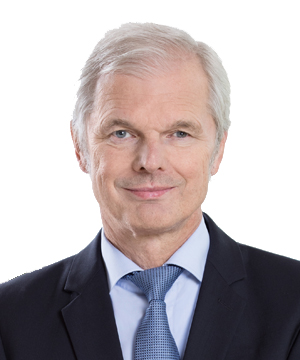The Chief Executive Officer (CEO) of reinsurance giant Hannover Re, Ulrich Wallin, has warned that the reinsurance industry should expect a continuation of the competitive market landscape, underlining the need to develop a competitive advantage in order to be successful.
 The Germany-based reinsurer recently announced its fourth-quarter 2017 catastrophe results, posting income of almost €1 billion despite the impacts of 2017 catastrophe events, as its global scale and diversity helped to offset a plummeting underwriting result in P&C reinsurance.
The Germany-based reinsurer recently announced its fourth-quarter 2017 catastrophe results, posting income of almost €1 billion despite the impacts of 2017 catastrophe events, as its global scale and diversity helped to offset a plummeting underwriting result in P&C reinsurance.
Commenting on the impacts of 2017 catastrophe events and the January 1st, 2018 renewals season, Wallin explained during the firm’s Q4 earnings webcast that overall, the 1/1 renewals were quite positive for the firm as it was able to generate higher rates in the post-event market environment.
“We were able to grow both our traditional business as well as our structured reinsurance business. So, overall, the growth of the business being renewed at 1/1/2018 came actually to 21%.
“However, the renewal season did not show the rate increases that many people might have hoped for, including us, I would say,” explained Wallin.
He continued to note that the reinsurer has a theory that every time the average return on equity (RoE) of the reinsurance market dips below 5%, something alluded to by Hannover Re’s Chief Financial Officer (CFO) during the webcast, Roland Vogel, there will be a reaction from the industry as seen in 2009 and 2012, for example.
However, “This was not that remarkable in 2018,” said Wallin.
“The main reason is that none of the capacities were withdrawn which was different in 2009 and 2012, when some capacities were withdrawn, but not this time. Most of the underwriting units on the P&C side were waiting for significant market-changing events and were of course trying to increase their capacities rather than decrease their capacities following the losses. So, all we have seen is an increased underwriting discipline of the underwriter and a loss-driven hardening.
“So, I think what that really shows, in years like 2017, we have to expect that we have to continue to deal with the very competitive market and we have to look for competitive advantages in order to be successful in those markets. It’s not good enough to say, ‘well I have a lot of losses in a year like this, but I make it all back by the rate increases in the following year,’ this kind of loss levels does no longer work,” he explained.
Despite the impacts of Q3 and Q4 catastrophe events the alternative, or third-party reinsurance market reloaded and actually grew in size in time for the January 1st renewals, ultimately combining with traditional capacity to limit any post-event price surge that reinsurers had been calling for.
As a result and as noted by Wallin, the reinsurance industry remains extremely competitive and questions remain about the sustainability of rate increases, with many in the sector suggesting the pricing cycle has reached a ‘new normal’.
To offset the competition and remain profitable in the challenging landscape a competitive advantage is an important to way to generate profits and beat the competition, especially in the highly competitive property catastrophe space.


